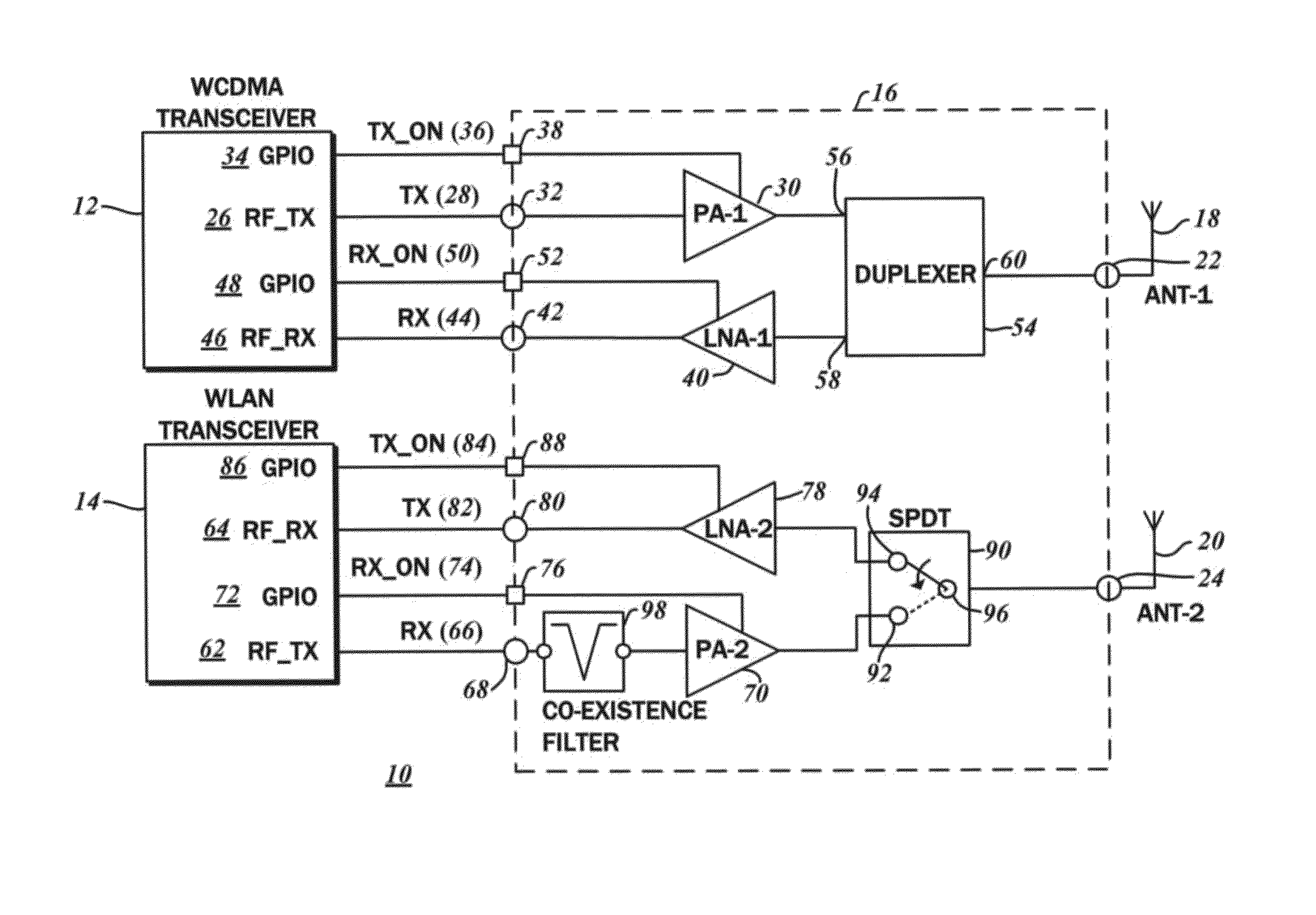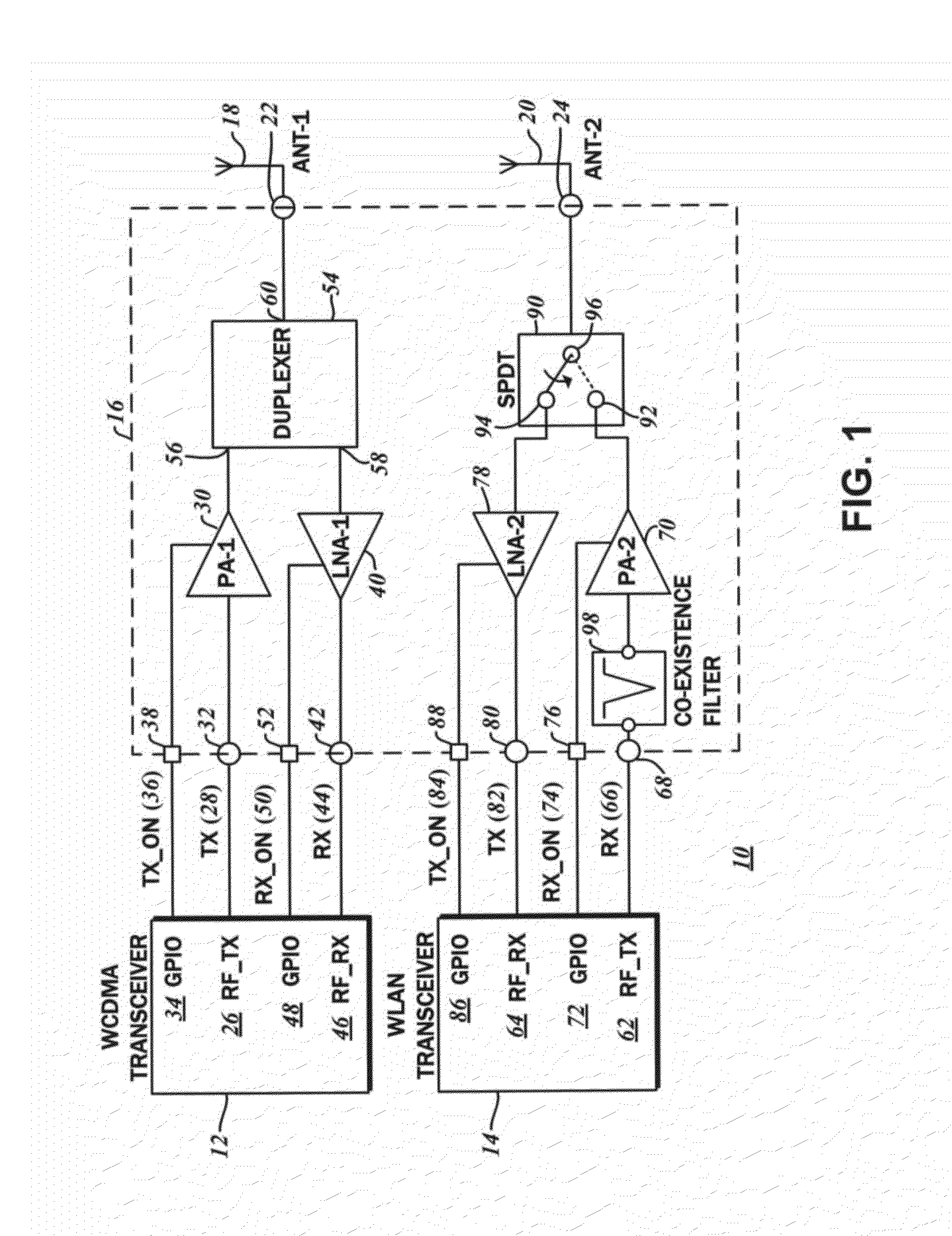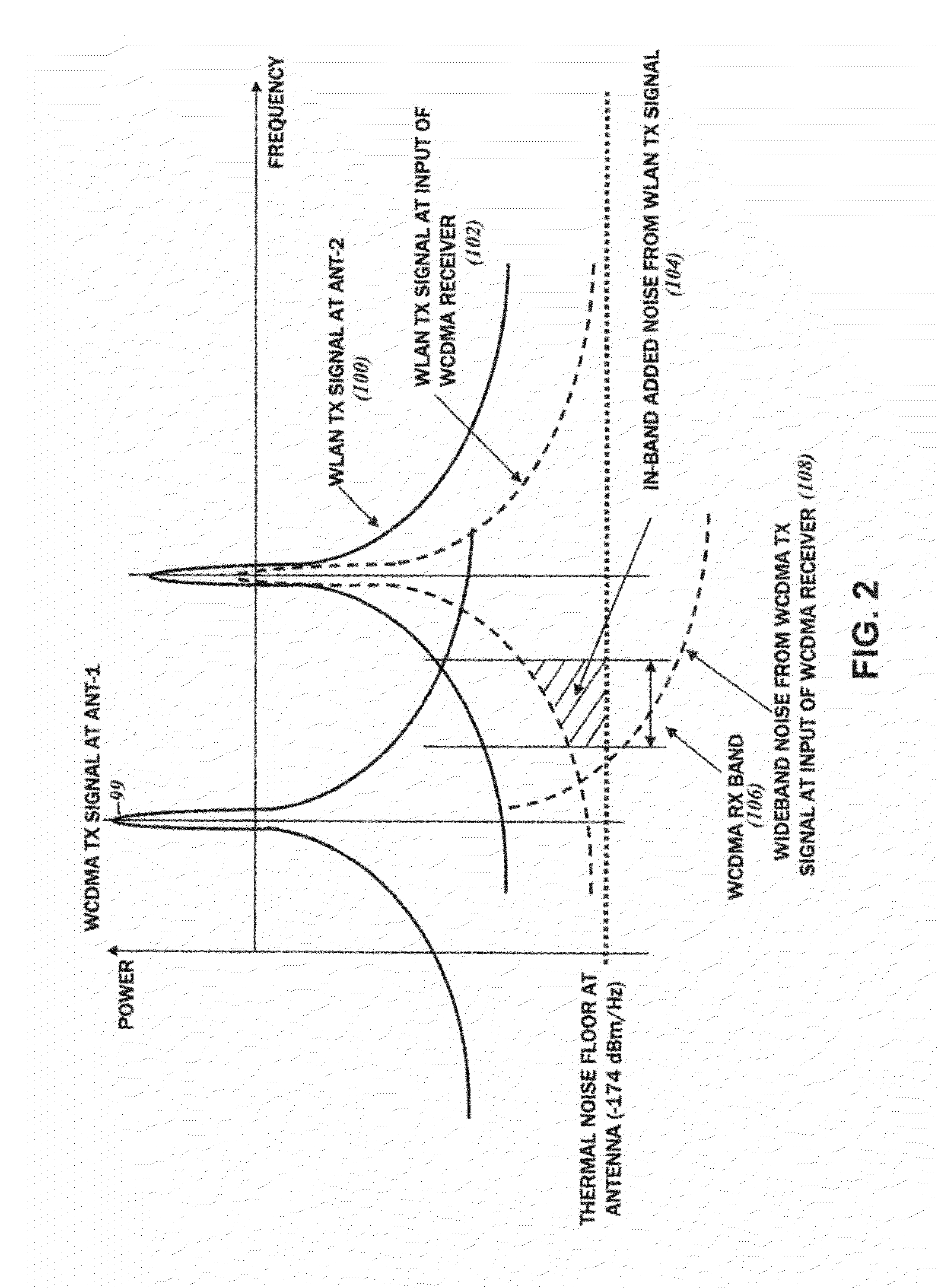Power amplifier with co-existence filter
a technology of power amplifier and filter, which is applied in the field of radio frequency signal circuitry, can solve the problems of increasing the overall footprint of the printed circuit board, spurious noise and interference, and the insufficient power of conventional mobile handset transceivers, and achieves the effect of minimizing the instability of the filter
- Summary
- Abstract
- Description
- Claims
- Application Information
AI Technical Summary
Benefits of technology
Problems solved by technology
Method used
Image
Examples
first embodiment
[0064]With reference to the schematic diagram of FIG. 4, the co-existence filter 98a includes a capacitor C2 connected to a junction 128 that is tied to a third terminal 116c of the transistor 116. Connected in series with the capacitor C2 is an inductor L2 tied to ground. As indicated above, there is an inductance 122 that corresponds to the bond wire that ties the third terminal 116c to ground, and this is shown as inductor L1. Similarly, the inductor L2 is also implemented as a bond wire with a high Q-factor. The bond wires corresponding to the inductors L1 and L2 are positioned in close proximity to each other, and the coupling coefficient between the die pads for the bond wires define a coupling coefficient which has typical values of 0.4 to 0.5.
[0065]The values for the capacitor C2 and the inductors L2 and L1 are selected such that the impedance at junction 116c looking from emitter side down at the WLAN operating frequency (2.4 GHz to 2.5 GHz), there is a small resistive valu...
second embodiment
[0067]Referring now to the schematic diagram of FIG. 6, there is depicted the co-existence filter 98b. This variation likewise includes the capacitor C2 connected to the junction 128 tied to the third terminal 116c, and the inductor L2 connected in series with the capacitor C2 and tied to ground. Additionally, there is a capacitor C3 also connected to the junction 128, and an inductor L3 connected in series with the capacitor C3 and tied to ground. As indicated above, the inductor L1 may implemented as a bond wire that ties the third terminal 116c of the transistor 116 to ground. Along these lines, the inductors L2 and L3 may also be bond wires that are physically positioned in close proximity to each other. The coupling coefficient between the die pads of the inductor L1 and the inductor L2, as well as between those of the inductor L1 and the inductor L3 are understood to be typically 0.4 to 0.5, while the coupling coefficient between die pads of the inductor L2 and the inductor L3...
third embodiment
[0069]The schematic diagram of FIG. 8 illustrates yet another, third embodiment of the co-existence filter 98c. In this embodiment, an inductor L4 separates the junction 128 from the third terminal 116c of the transistor 116. However, the capacitor C3 in series with the inductor L3 is directly connected to the third terminal 116c, while the second capacitor C2 in series with the second inductor L2 remains connected to the junction 128. Again, each of the inductors L1, L2, and L3 are implemented as bond wires, and the die pads to which they are attached define various magnetic coupling coefficients that are in line with the parameters discussed above.
[0070]The various components of the co-existence filter 98c can be adjusted to exhibit the aforementioned impedance characteristics at the operating frequency and the rejection frequency band, and the simulated response shown in the Smith chart of FIG. 9 illustrates conformance therewith. The third embodiment of the co-existence filter 9...
PUM
 Login to View More
Login to View More Abstract
Description
Claims
Application Information
 Login to View More
Login to View More - R&D
- Intellectual Property
- Life Sciences
- Materials
- Tech Scout
- Unparalleled Data Quality
- Higher Quality Content
- 60% Fewer Hallucinations
Browse by: Latest US Patents, China's latest patents, Technical Efficacy Thesaurus, Application Domain, Technology Topic, Popular Technical Reports.
© 2025 PatSnap. All rights reserved.Legal|Privacy policy|Modern Slavery Act Transparency Statement|Sitemap|About US| Contact US: help@patsnap.com



